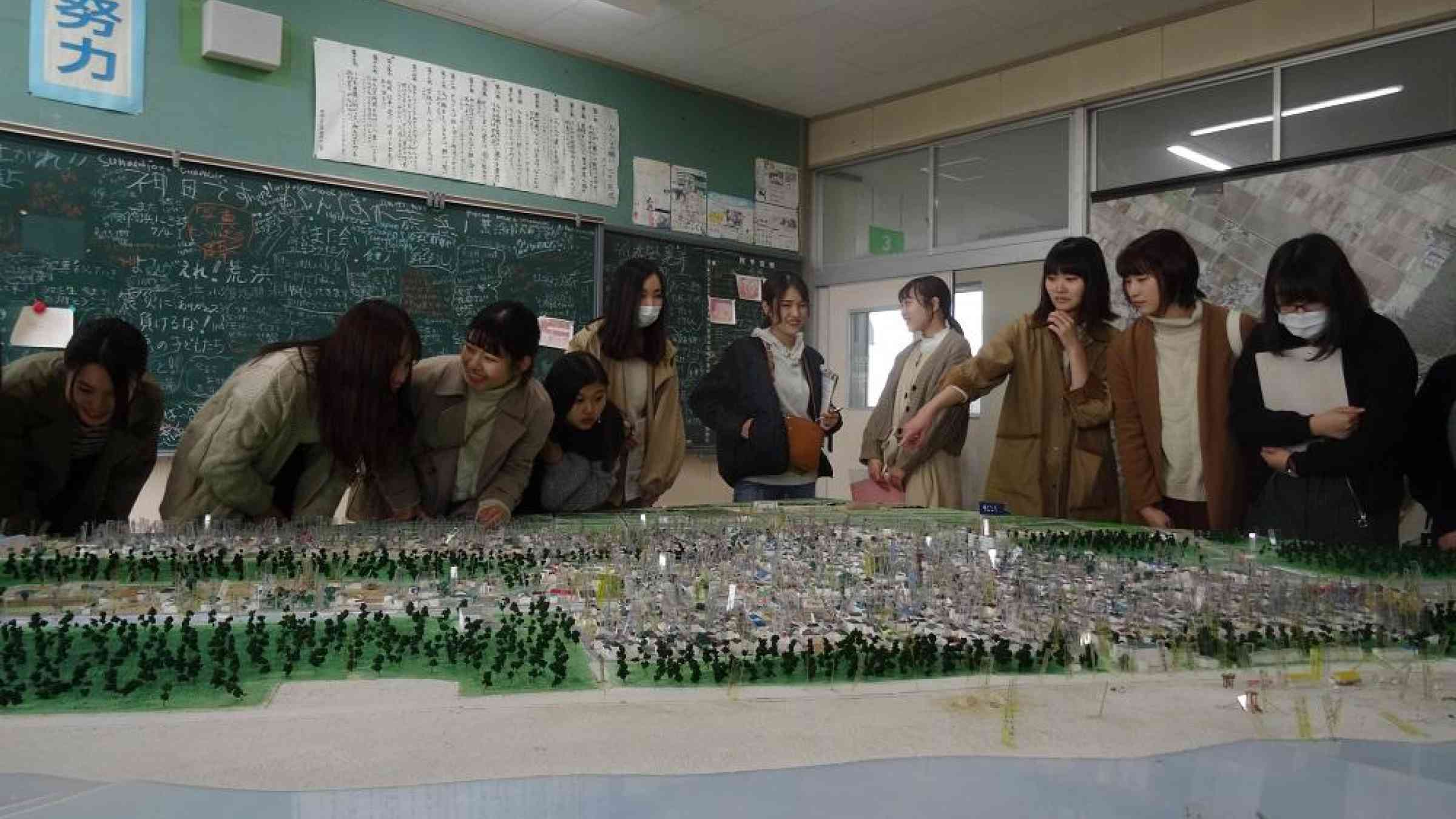School for tsunami risk draws crowds

SENDAI, 6 November, 2019 - The earthquake and tsunami which occurred in Chile in February, 2010, helped save the lives of 320 people in Japan when it was struck the following year by the strongest recorded earthquake and tsunami ever to hit the country.
The tsunami waves from Chile reached Japan’s Tohoku coast and prompted a review of disaster prevention measures at the Arahama Elementary School situated close to the sea in the Sendai region of Japan.
The prescient decision was taken to move the school’s tsunami evacuation site from the gymnasium to the main four-storey school building. Emergency supplies kept in the gym were moved to the third floor of the school.
The March 11, 2011 earthquake was felt at 14.46 and a tsunami warning quickly followed. The Great East Japan Earthquake was at least magnitude 9 and reached maximum intensity of 7 on the Japanese scale of measurement.
Arahama headmaster, Takao Kawamura, ordered the gym to be shuttered and any children inside to leave for the safety of the school’s upper floors where they had a grandstand view of the seven metre high tsunami as it suddenly burst through the forest of pine trees which screened the school’s view of the ocean.
The waves destroyed the gym and reached up to the second floor of the school, jamming the stairwell with debris from the remains of the pine forest and vehicles from the car park. The 320 people on the rooftop including schoolchildren, staff and some local people were safe.
That is all part of the story shared with the 200,000 people who have visited the school over the last two years. Arahama Elementary School is now partly derelict, left as it was after the tsunami, and has been converted into a place of pilgrimage and learning to spread awareness of tsunami risk among Japanese and many visitors from overseas.
One of the guides, Mori Kida (57), survived the tsunami on the rooftop of the school with her ten year old son, Tomoya. She worked part-time in the school library but was at home when she felt the powerful earthquake.
She drove as soon as possible to collect her son from the school but decided to stay there when she saw how congested the traffic was on the roads leading away from the coast towards the safety of Sendai city. Mori and Tomoya remained there for the next 20 hours until it was safe to leave.
Her mission in life now is to spread awareness of tsunami risk by talking to the many groups that visit the site such as the 20 young student teachers from Miyagi university who visited there yesterday on World Tsunami Awareness Day.
Among them was Yukika Eiro who was a young girl living near the Fukushima nuclear power plant which was destroyed by the tsunami and continues to generate radioactive waste. Her main concern as a young girl was the radiation coming off the nuclear reactor.
She explained that one reason she wanted to become a teacher was to pass on her own experiences and the visit to Arahama had strengthened her desire to be an advocate for disaster risk reduction for future generations of Japanese schoolchildren. “Coming here has really helped my understanding of tsunami risk,” she said after a visit to a classroom which now uses a model of Sendai’s inundation zone.
In March 2011, some 200 people died out of 2,000 who lived in the Arahama district. Many of them were older retired people who were either unable to evacuate on their own or reluctant to leave their homes.
Mori’s advice to everyone living in a tsunami zone is simple. “When you feel the earthquake, move immediately to safety and higher ground. Don’t wait for the tsunami alert.”